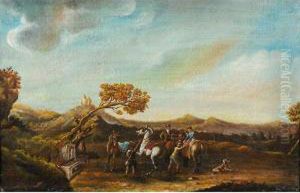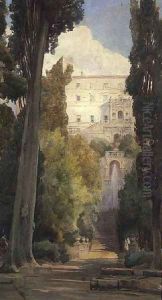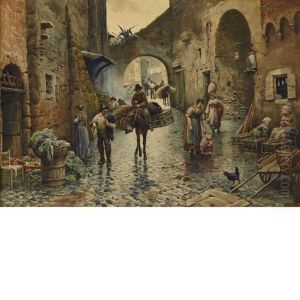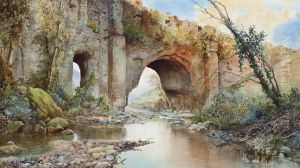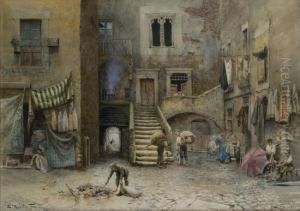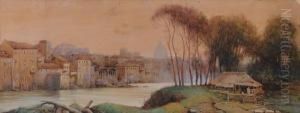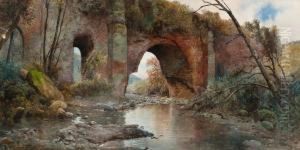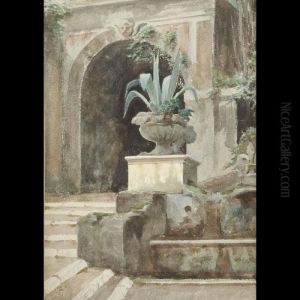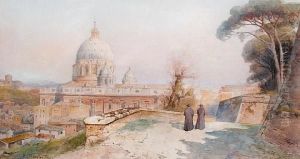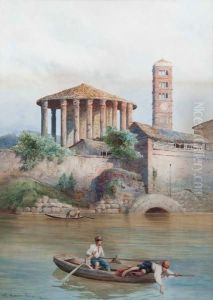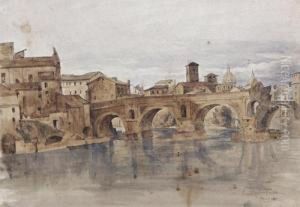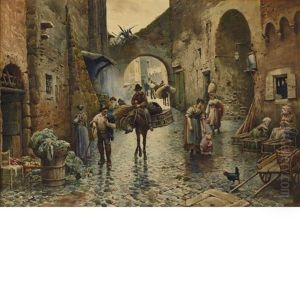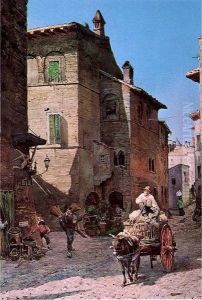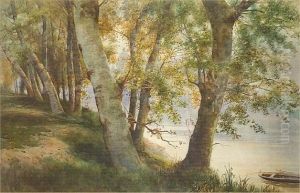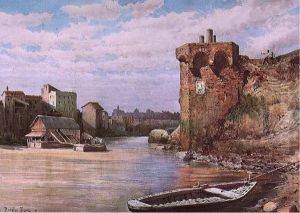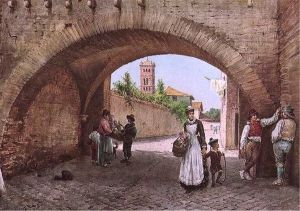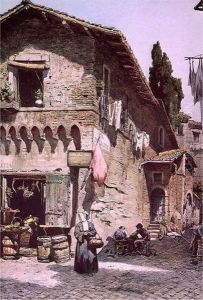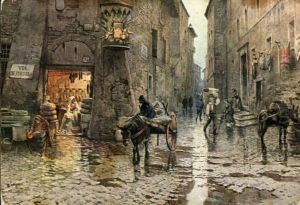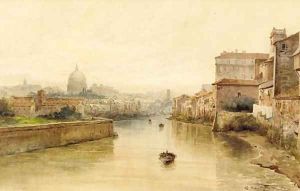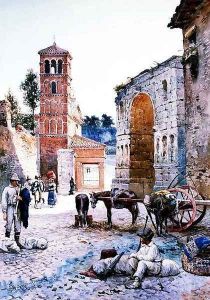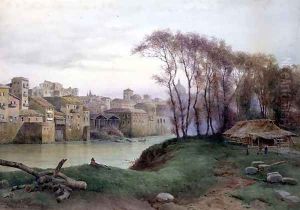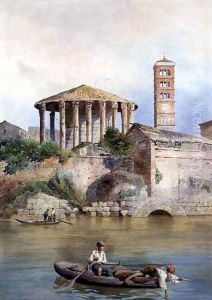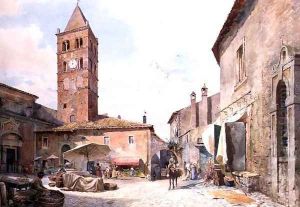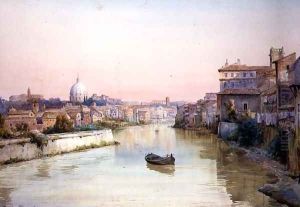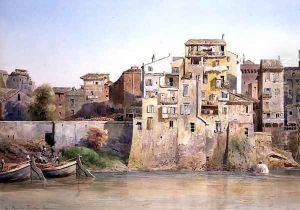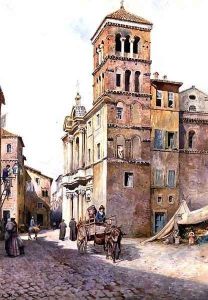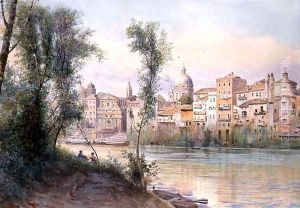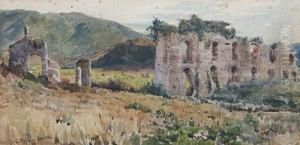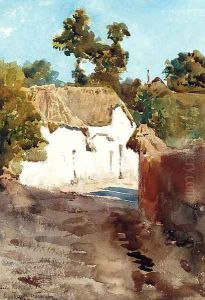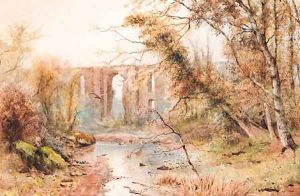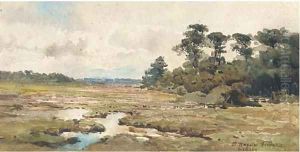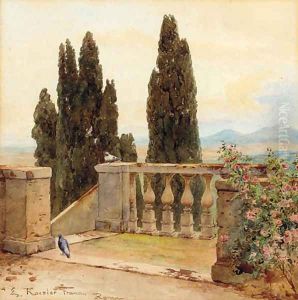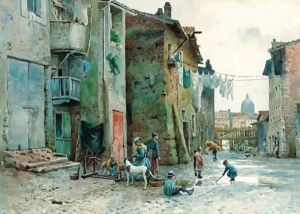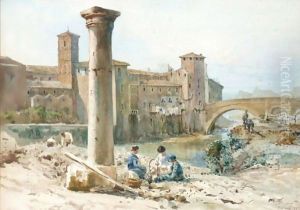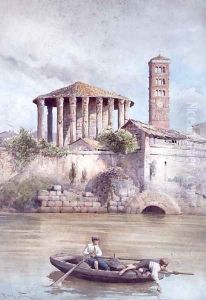Ettore Roesler Franz Paintings
Ettore Roesler Franz was an Italian painter and photographer, best known for his watercolor series 'Vanished Rome' ('Roma sparita'). Born on May 11, 1845, in Rome, he was a prominent figure in the late 19th century Roman art scene. Despite his Germanic-sounding name, he was deeply rooted in the cultural milieu of Rome, where he spent most of his life.
Roesler Franz developed an interest in art at an early age, although his initial education was not formally linked to art studies. He later pursued his passion for painting, focusing on watercolors, which eventually became his signature medium.
His work is particularly significant for its historical and documentary value. Between 1878 and 1896, Roesler Franz created three series of watercolors that depicted scenes of Rome's urban landscape and daily life, capturing areas of the city that were undergoing rapid transformation or were at risk of disappearing due to the modernization efforts that followed the unification of Italy. This body of work, made up of 120 paintings, is collectively known as 'Roma sparita.'
Roesler Franz’s attention to detail and his commitment to realism have allowed future generations to get a glimpse of the architectural and social fabric of Rome in the late 19th century. His paintings are characterized by their accurate representation of buildings, streets, and the daily activities of Rome's inhabitants. He also showed an interest in the traditions and costumes of the Roman people, which adds an ethnographic dimension to his work.
Aside from his artistic pursuits, Roesler Franz also served as a municipal councilor in Rome, reflecting his deep involvement in the city’s civic life. His works were exhibited in various Italian cities and were met with acclaim. Today, they are considered invaluable records of a Rome that has since been altered by the passage of time.
Ettore Roesler Franz died on March 26, 1907, in Rome. His legacy lives on through his evocative paintings, which continue to be appreciated for their beauty and historical importance. They can be seen in various public and private collections, including museums and galleries dedicated to preserving Rome’s artistic heritage.
